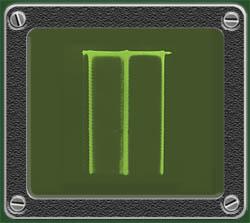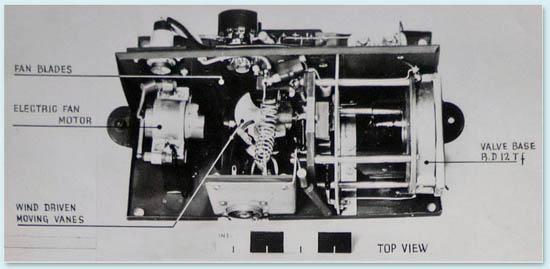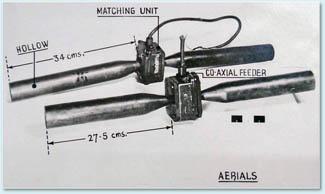
|
The period under review has been notable from several aspects [including] the employment of airborne jammers on the 200 Mc/s band. Summary of enemy jamming of radar frequencies, 12–25 May 1944 The Luftwaffe Signals Branch held conference about jamming sets on 11 May 1944 deciding that Kettenhund testing at Köthen should be seen through before it was used at the front. To date, 44 aircraft of KG 2 were ready to operate with it while a further 16 had the sets built-in but were awaiting the necessary antennae. Prisoners of war later recalled that installation had taken place over the previous three or four days in the Ju 188s of I./KG 2, with instruction given to the Bordfunker. . In the Mediterranean Theatre, crews of Fliegerdivision 2 were due to commence the necessary training on 15 May and another device, Starnberg Gerät, was expected to be deployed by I./KG 6 in the near future, directed at British night fighter radio telephony. Despite the proposal to await further testing, Kettenhund was used in anger when a 91-strong force was sent against Bristol on the night of 14–15th May, Luftflotte 3’s Intelligence Officer commenting in his after-action report: With 13 Kettenhund aircraft operating the total of losses (11) [from the whole force] is strikingly high. Orders were given to switch on the apparatus from 80 km before to 80 km after crossing the coast of the South of England … About the effect, nothing can be said. Jamming was first reported by a Chain Home Low (CHL) station at 0120 hrs., the same time that a Red Warning was issued for South West England and continued until 0300, shortly before the all-clear was given. Affected equipment included: CHL, Ground Controlled Interception (GCI) radars and Identification Friend or Foe (IFF) Mark III. Once the jamming started, the number of transmitters increased quickly to at least 25, until the 134.5–237.2 mHz band was almost completely covered. Alongside the airborne sets, the ground-based jammers at Boulogne and Cap Gris Nez were operating and Düppel was dropped. Stations reported that “while they were often seriously restricted in operation there was not a complete wipe out” [emphasis in the original]. Nevertheless Beer Head (Devon) and Worth Matravers (Dorset) were “u/s most of the time” while Trevose Head and Rame Head (Cornwall), and St. Boniface Down (Isle of Wight) reported themselves “seriously affected to u/s [unserviceable] at times.” Effects were detected as far afield as Whitstable (Kent). Further airborne jamming was encountered when Portsmouth was raided on the night of 15/16 May and again a week later, the RAF concluding that: “The second and third raids can hardly be called successful from an airborne jamming point of view”. There is no mention in the above summary of any adverse effects on either Anti-Aircraft gun-laying (GL) radars or the fighters’ Airborne Interception (AI) sets, presumably because centrimetre-wave equipment had largely supplanted earlier systems. There were however indications that the German sets were not functioning consistently: The signals were essentially frequency modulated, … the frequency deviation as measured by Durlston Head [Swanage, Dorset] varied considerably … many of the railings modulations were unstable in recurrence frequency and put out apparently at random from time to time as if faulty. Many reports from ground stations indicate that the frequency modulating device also cut out occasionally, leaving only C.W. [continuous wave]. Hit by a night fighter, Ju 188 A-2, U5+HH (W.Nr. 160089) of 1./KG 2 broke up in the air with the deaths of all its crew save the pilot, Fw. Heinz Muhlberger. Nevertheless, a jamming transmitter was recovered from the wreckage scattered over four or five acres at West Worldham, Hampshire. The equipment was in sufficiently good condition to be tested by British technicians whose preliminary report was issued on 20 May. The set did not appear to be in series production: The construction technique contrasts with that seen in the standard radio equipment. Obviously the jammer has been built to a limited contract. The mounting frame is a simple sand casting with the holding lugs roughly welded on to it. The examination of the wreckage showed that the subject unit was carried on a mounting frame located just behind the bulkhead to the rear of the bomb bay on the port side. The fitting showed every evidence of being an expedient. The riveting was crude and the whole finish rough …
The unit examined swept from 162–183 Mc/s on a bench test … The jamming was of the ‘railing’ pattern, the frequency of pulses being 300 Kc/s … a lead is taken … to some other unit [which] was not recovered, but would undoubtedly serve to pulse the transmitter so as to produce railing jamming … … two dipoles [were] found in the wreckage … It would have been impossible to use FuG 25 A [IFF] on this aircraft since the aluminium sheet nearest the bulkhead spanned the slot into which [its] aerial retracts. continued on next page …
|
|||||
NOTE: The main source here contains a preliminary report on a captured transmitter. It concludes with the words, "The equipment has been sent for laboratory examination to R.A.E. and a complete report will be issued". To my frustration, that National Archives file is "wanting". © Nick Beale 2017–24 |
||||||
 |
||||||
(above) How "railings" jamming, of the type produced by Kettenhund, appeared on a radar display. |
||||||

 and it is not possible to state their location with any precision. However, in the floor of the fuselage there were two holes about [4 cm] in diameter. The first was [55 cm] behind the bomb bay bulkhead and second a further [105 cm] towards the tail. On the outside of the skin covering each hole there was evidence that an aluminium sheet shaped like a “U” might have formed a support for the matching units to which the aerials are fixed.
and it is not possible to state their location with any precision. However, in the floor of the fuselage there were two holes about [4 cm] in diameter. The first was [55 cm] behind the bomb bay bulkhead and second a further [105 cm] towards the tail. On the outside of the skin covering each hole there was evidence that an aluminium sheet shaped like a “U” might have formed a support for the matching units to which the aerials are fixed.